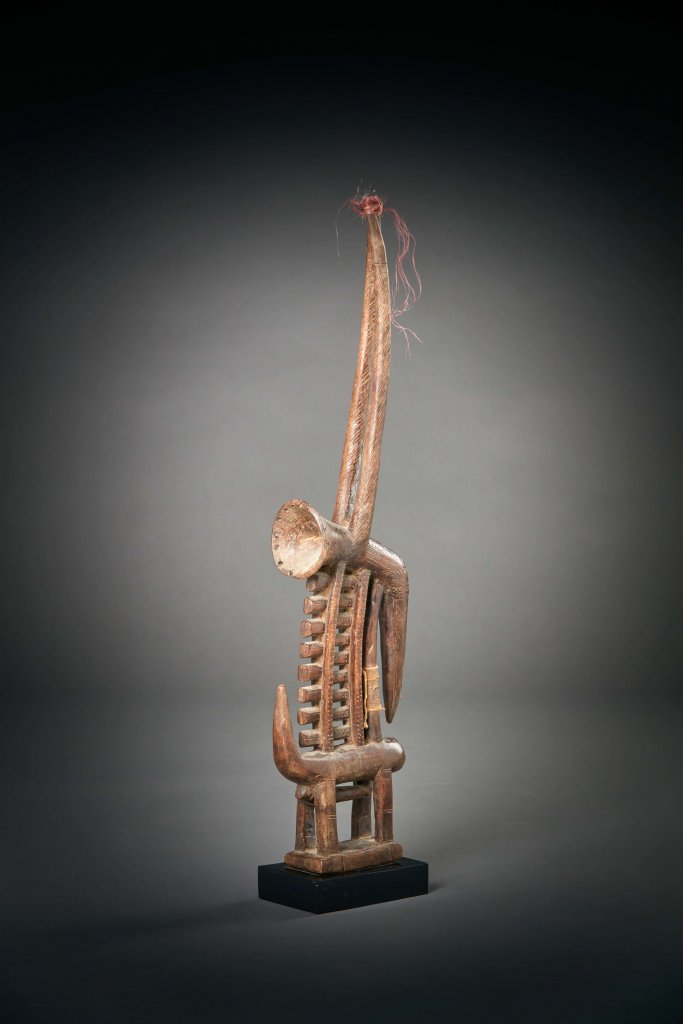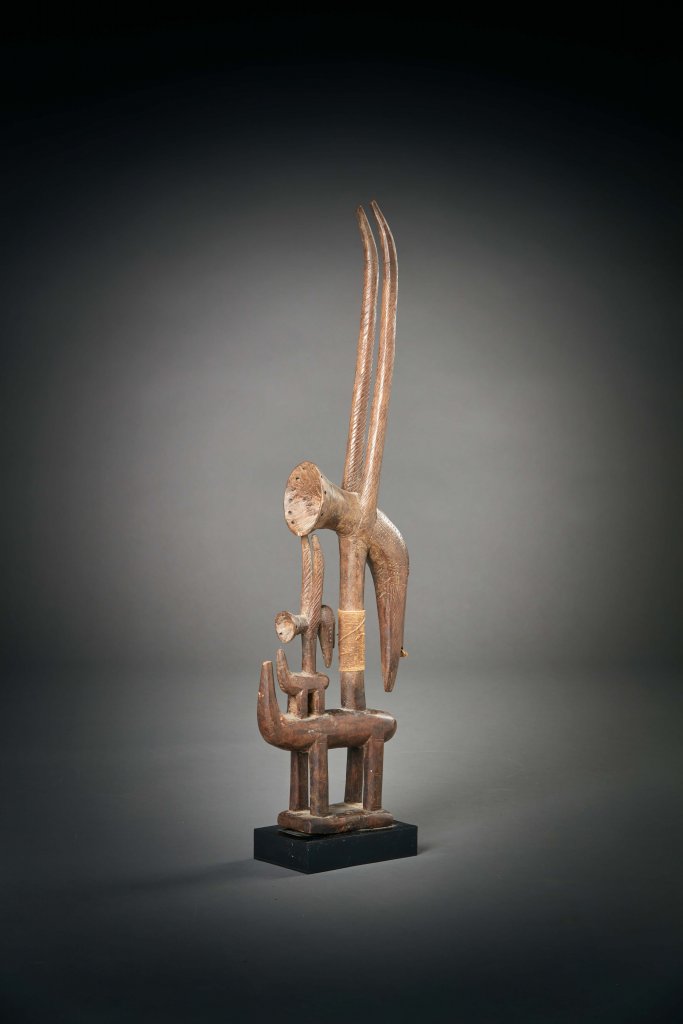Tyi-Wara Male Dance and Female Dance Headdresses
The Tyi-Wara headdresses are associated with the institutional training of young adolescence and pre-pubescent boys, preparing them for adulthood or when they are of the age-grade group to enter into Tyi-Wara of the Ntomo. This is where the young men are prepared for their future roles as husbands and fathers. The ceremonies are conducted by pairing off a male and female performer, and performing dances that focus, emphasis, centered upon the agricultural skills needed to become successful farmers.
Manhood was determined by six stages of the initiation societies; reaching the highest rank or level is a comprehensive acknowledgment of their ancestral traditions. Each stage of these initiation ceremonies was accompanied with the use of a certain zoomorphic, animal mask. The antelope mask or headdress was rendered in the ceremonies of the fifth stage of the society.
The Bamana believed that the primordial being of Tyi-Wara was the first farmer who taught mankind how to cultivate their agricultural fields. The Tyi-Wara masqueraders performed at the beginning and end of the agricultural seasonal cycle. Annual ceremonies are performed by two members of a certain age group who were chosen to dance and perform the Tyi-Wara ceremony accompanied by their female consorts.
Both masqueraders perform the ceremony in a somewhat bent over position using what would seem like a farmer’s hoe or tool as they danced, imitating their skills tilling the ground or soil. The female consort assists her male counterpart in her performance, as she assists in the praise of cultivation. Each headdress is carved out of one block of wood, respectively representing antelope. The female consort is depicted carrying or transporting a baby on her back.
Provenance: The first known American collector was the renowned collector Lawrence P. Kolton and Rachel Angotti of Michigan City, Indiana, between the years of 1969 and 1979.
Circa 1940s
Wood, cloth, raffia, fiber
29 x 9 x 3 in
74 x 23 x 8 cm
Bamana people; Region Segou- Koutiala, Southwestern area of the Bamana in Mali, West Africa

